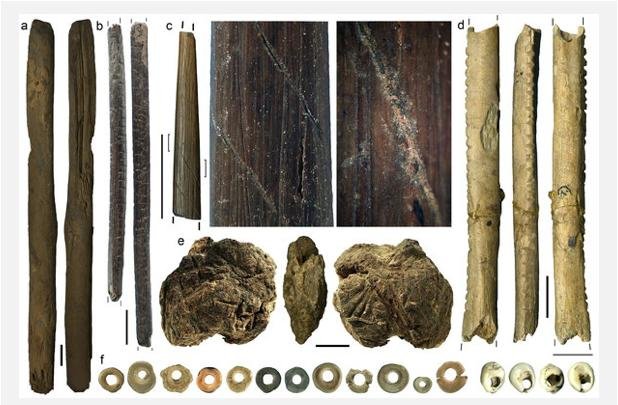Objects found in the archaeological site called Border Cave include a) a wooden digging stick; b) a wooden poison applicator; c) a bone arrow point decorated with a spiral incision filled with red pigment; d) a bone object with four sets of notches; e) a lump of beeswax; and f) ostrich eggshell beads and marine shell beads used as personal ornaments. Credit: Francesco d'Errico and Lucinda Backwell
PIETERMARITZBURG, South Africa, July 30 (UPI) -- Modern culture emerged in southern Africa more than 20,000 years earlier than anthropologists had previously believed, researchers said Monday.
The fist emergence of technology and art characteristic of modern culture happened about 44,000 years ago, at about the time modern humans were moving from Africa to Europe, where they soon displaced Neanderthals, they said.
An international team of researchers said the evidence came from an archaeological site called Border Cave in the foothills of the Lebombo Mountains on the border of South Africa and Swaziland, the Los Angeles Times reported.
The cave yielded ostrich eggshell beads, bone arrowhead points, wooden digging sticks, worked pig tusks that were probably use for planing wood and notched bones used for counting, researchers said.
"They adorned themselves with ostrich egg and marine shell beads, and notched bones for notational purposes," said paleoanthropologist Lucinda Blackwell of the University of Witwatersrand in South Africa, a member of the excavation team.
The very thin bone points are "very good evidence" for the use of bows and arrows, co-author Paola Villa, a curator at the University of Colorado Museum of Natural History, said.
Some of the bone points were apparently coated with a poison made from the castor bean, she said.
"Such bone points could have penetrated thick hides, but the lack of 'knock-down' power means the use of poison probably was a requirement for successful kills," she said.















